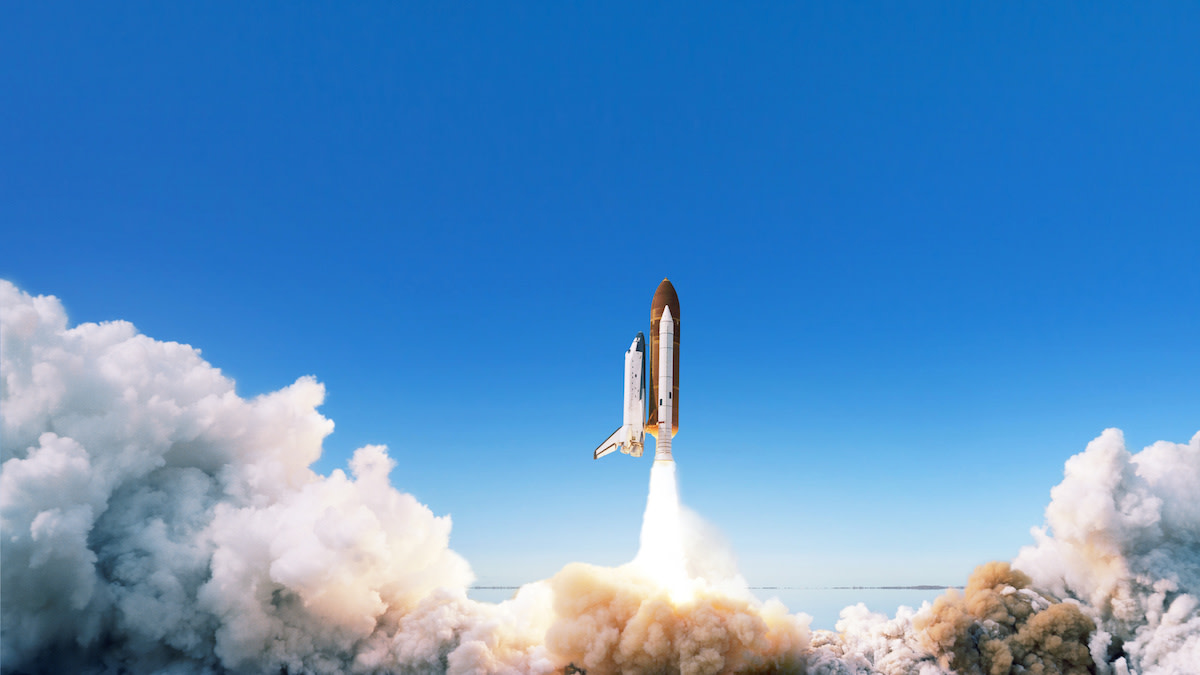How to Launch a Space Shuttle: Learn About the Final Countdown
Written by MasterClass
Last updated: Aug 30, 2021 • 4 min read
The birth of the Space Shuttle program marked one of the biggest leaps forward in the field of space exploration. The Space Shuttle was the first spacecraft that was designed to be reused, and it was capable of being flown to space one hundred times. Over the thirty year lifespan of the program, various iterations of the space shuttle launched 134 times.
Learn From the Best
What Is the History of Space Shuttle Launches?
The space shuttle was developed by NASA as a partially reusable low Earth orbital spacecraft. The NASA Space Shuttle Program was designed as a way to send NASA astronauts into space at a lower cost than prior programs, because for the first time the space shuttle and its solid rocket boosters (SRBs) could be reused. The space shuttle utilized a solid rocket booster propulsion system, as opposed to a liquid fuel system used by the Apollo and Soyuz spacecrafts.
The first successful space shuttle launch occurred in 1981 with the liftoff of Space Shuttle Columbia. The test flight achieved take off from NASA’s Kennedy Space Center (KSC) in Florida and returned back to Earth at Edwins Air Force Base two days later.
Over the next thirty years, NASA’s shuttle fleet—including the Space Shuttle Challenger, Space Shuttle Discovery, Space Shuttle Atlantis, and Space Shuttle Endeavour—launched United States astronauts into space, acting as a vital part of the United States Space Program. Space shuttle missions included carrying satellites to space, participating in the first Spacelab mission dedicated to human medical research, launching the Hubble Space Telescope, and helping to build the International Space Station.
Two of the space shuttles, the Challenger and the Columbia, experienced fatal mission accidents, resulting in the loss of fourteen total astronaut lives.
The space shuttle program’s final flight occurred on July 8, 2011 with the space launch of the Space Shuttle Atlantis (STS-135), which landed on July 21, 2011, roughly thirty years after the successful launch of the first shuttle in the Space Shuttle Program.
How Does NASA Prepare for a Space Shuttle Launch?
In order to ensure a successful launch, NASA performed a meticulous and detailed process of inspection, assembly, and transportation for the space shuttle:
- Inspect Each Vehicle Element. Before each spaceflight, every space shuttle element undergoes extensive maintenance and preparation in the orbiter processing facility. The space shuttle orbiter, boosters, external fuel tank, and main engines must be meticulously inspected and processed to ensure that the shuttle can withstand the rigors of space travel and re-entry into earth’s atmosphere.
- Attach tank and boosters. After inspecting each vehicle element, the shuttle is transported to a Vehicle Assembly Building, where the body of the shuttle is attached to its external tank and boosters.
- Transport to launch pad. Once the launch vehicle was assembled, a crawler-transporter would slowly and carefully wheel the shuttle and its mobile launch platform to the launch pad.
What Are the Phases of a Space Shuttle Launch?
Once the launch date was set, a series of intense checkpoints were completed by NASA’s ground team to ensure that the launch was a success. The NASA ground team resolved any unforeseen technical issues while the test director conducted a readiness poll amongst the shuttle launch team. The Cape Canaveral weather forecast was also monitored to make sure that conditions were suitable for human spaceflight.
The final nine minutes before liftoff were a flurry of activity at the launch complex, with crew members and programs working in tandem to make sure that everything was set for launch:
T-Minus 9 Minutes: The Ground Launch Sequencer (GLS), a computer program that handles all activity during the final moments of the countdown, takes control of the countdown sequence. This program would continually monitor the launch vehicle and alert Houston to any problems.
T-Minus 7 Minutes, 30 Seconds: The orbiter access arm retracts, thus allowing the astronauts to enter the crew compartment of the shuttle.
T-Minus 5 Minutes: The commander gives the order to turn on the orbiter’s auxiliary power units (APU). Then, the GLS program switches off the fuel valve heaters. All the while, the GLS program is performing checks on the fuel engines of the space shuttle.
T-Minus 2 Minutes: The shuttle commander tells fellow crewmates to retract the visors of their entry and launch suits as the GLS maintains automatic countdown control.
T-Minus 31 Seconds: Barring any technical issues, the GLS shifts countdown control to the computers aboard the space shuttle.
T-Minus 16 Seconds: A sound suppression water system is activated, which serves to protect the space shuttle from the massive sonic energy that is produced during takeoff. The water system can expel up to 900,000 gallons of water per minute.
T-Minus 6 Seconds: The command is relayed to initiate the space shuttle’s three main engines.
T-Minus 0 Seconds: Solid rocket boosters are ignited as the bolts securing the shuttle to the ground are discharged, allowing the rocket launch to propel the spacecraft into the atmosphere.
Want to Learn More About Space Exploration?
Whether you’re a budding astronautical engineer or simply want to become more informed about the science of space travel, learning about the rich and detailed history of human space flight is essential to understanding how space exploration has advanced. In Chris Hadfield’s MasterClass on space exploration, the former commander of the International Space Station provides invaluable insight into what it takes to explore space and what the future holds for humans in the final frontier. Chris also talks about the science of space travel, life as an astronaut, and how flying in space will forever change the way you think about living on Earth.
Want to learn more about space exploration? The MasterClass Annual Membership provides exclusive video lessons from master scientists and astronauts like Chris Hadfield.
